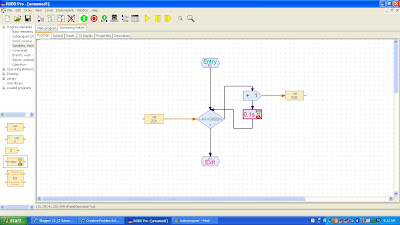Survival at Sea
Intro: A brief summary of the activity.
The most recent activity we had in engineering was simple: determine from a list of items what you would bring in order to survive being stranded at sea. Seemed easy enough, so me and digmaster ended up coming with this order:
Personal Prioritization: List your prioritization of the items. Share your reasoning on your top 2 picks and your bottom choice. Were there any items you had a hard time choosing a ranking for?
1. a floating sea cushion
2. a shaving mirror
3. 20 square feet of opaque plastic sheeting
4. a 10 liter can of oil/petrol mixture
5. a 25 liter container of water
6. a fishing kit
7. a case of army rations
8. one bottle of 160 percent proof rum
9. a quantity of mosquito netting
10. 15 ft nylon rope
The logic of this list seemed pretty sound, and we had some good ideas on how to use each individual item. The floating sea cushion could be used as a flotation in case if someone (or yourself) went overboard the raft. The shaving mirror was a possible way to signal for help to nearby ships or over passing planes. The nylon rope, which we ranked the least important on our list of top 10, we kept because we saw potential to use it with the mosquito netting, which we could in turn use as a fishing net when the army rations ran out.
Team Prioritization: What priority did your team agree on? Talk about an item the group ranked similarly to you. What was something the group ranked far differently than you? What was something you and the group ranked similarly? How did your group work together?
We felt pretty confident about our decisions, and felt that each item had a sound logical explanation of its order. Originally, we had the transistor radio on the list as number 1, but after some debating, we ditched it for the rope because the radio had only a short range and was one way. Digmaster and I generally agreed on most of the item placement, and didn't run into much resistance to each others ideas.
Expert Prioritization: How did your choices compare to the "official" Coastguard choices? Were there any big surprises between the two? What do you put more weight in, expert opinion or experiential data? Why?
When it came to unveiling the actual order the "experts" (a.k.a the Coast Guard ಠ_ಠ ) we were slightly surprised over the results. Where we saw the mosquito netting as a fish net, the Coast guard saw it as useless because there aren't any mosquitoes in the ocean. We were able to agree on the shaving mirror as being pretty important, but the seat cushion was apparently useless to them as an emergency life preserver. Overall, I feel that the expert opinion is based on linear thought; the Coast guard was not able to think outside of the box, and only saw the most common and present use.







